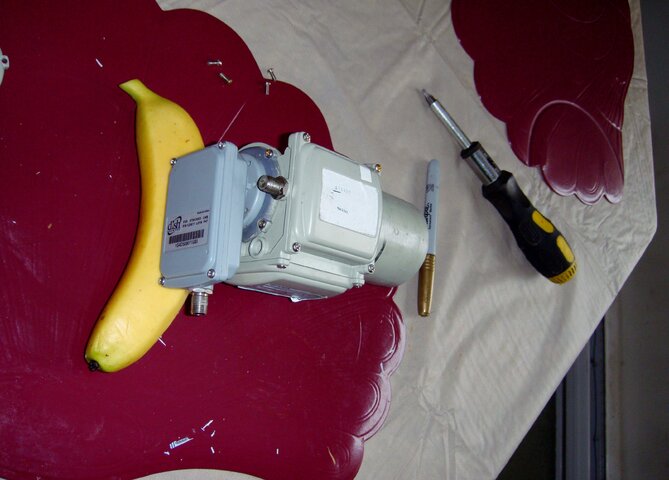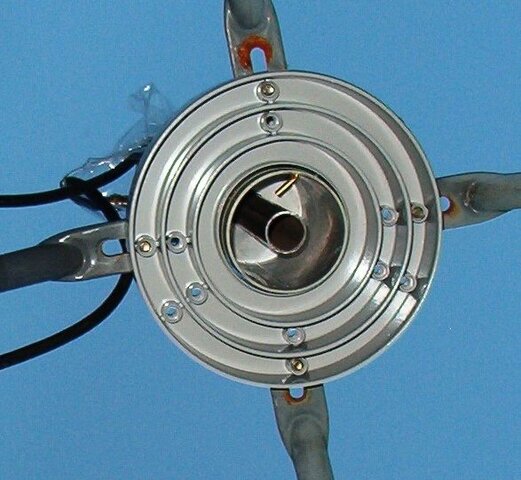This combo begged to be tried because all the parts just fit with minimal work.
these are an FSS and a B1sat stacked lnb.
The hole in the back of the B1sat (shown is pic B) is the same size as the feedhorn tube on the FSS (pic C). You cut one hole (pic A) in the backplate of the B1sat (also pic A). Cut down the FSS feed to just enter the hole in the B1sat .
so you have FSS, backplate, FSS feed all bolted together. Put that on the B1sat . It bolts right on.
In pic F it shows the FSS feed just entering the Hole in the B1sat.
Results are a compromise. i wanted to get Cozi and the music channels, but all i could get was the music channels .
i did not notice any C-band differences. this was for bird 103.
the bud for this is the 7.5 perfect 10.

Sometime, i will just put up another dish to get cozi tv.
anyway, finished product is a stacked combo.
these are an FSS and a B1sat stacked lnb.
The hole in the back of the B1sat (shown is pic B) is the same size as the feedhorn tube on the FSS (pic C). You cut one hole (pic A) in the backplate of the B1sat (also pic A). Cut down the FSS feed to just enter the hole in the B1sat .
so you have FSS, backplate, FSS feed all bolted together. Put that on the B1sat . It bolts right on.
In pic F it shows the FSS feed just entering the Hole in the B1sat.
Results are a compromise. i wanted to get Cozi and the music channels, but all i could get was the music channels .
i did not notice any C-band differences. this was for bird 103.
the bud for this is the 7.5 perfect 10.


Sometime, i will just put up another dish to get cozi tv.
anyway, finished product is a stacked combo.
Last edited:




